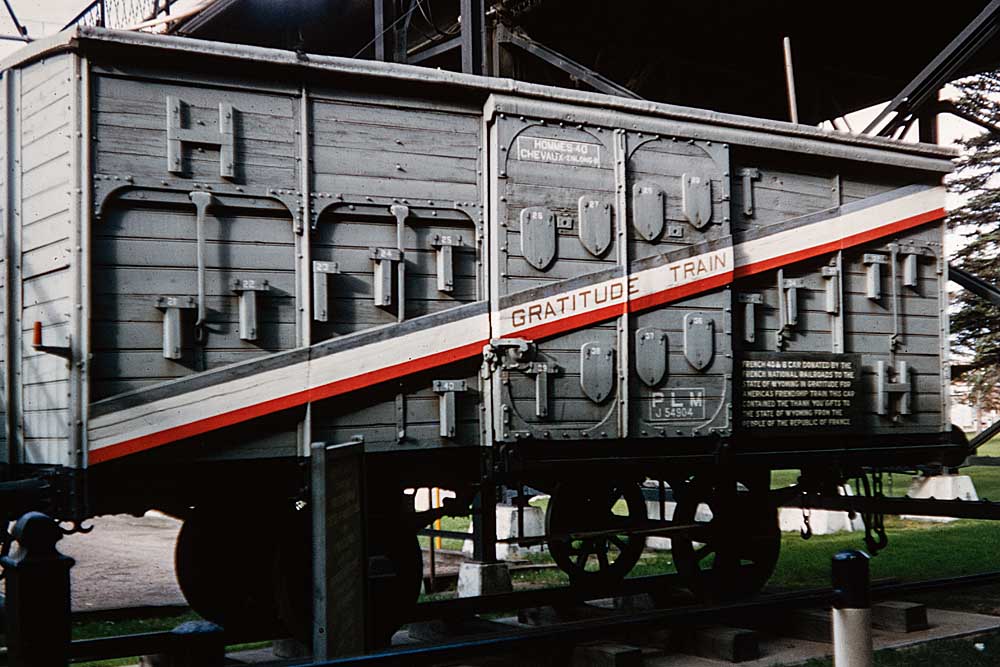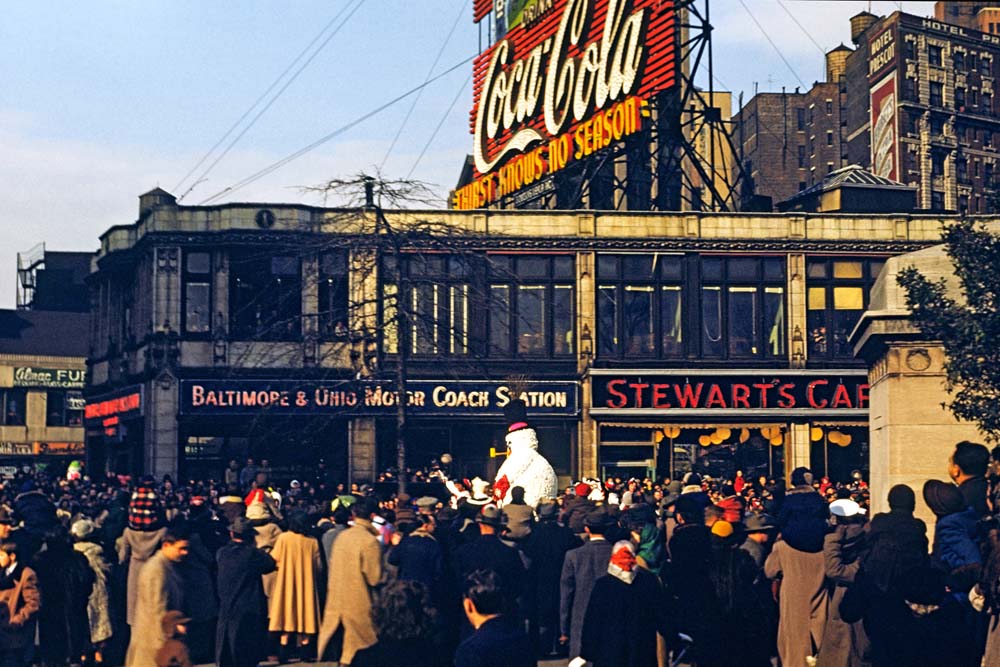France’s 1949 Merci Train left a legacy of European rail equipment displays throughout the U.S.

During the period around World War I and II a number of European railroads utilized a small boxcar — small by American standards. The cars rode on four wheels and carried all of 20 tons. In France, such boxcars carried the label: Hommes 40, Chevaux (en long) 8 — translated: 40 men, eight horses long. Plainly, the car would hold 40 men or eight horses when loaded running parallel with the car’s long dimension. Many soldiers told tales of riding in one of these tiny boxcars along with 39 mates. There were no seats, windows, or toilets. Floorspace barely permitted comfortable seating. Laying down required cooperation and riddling through a geometric puzzle to give each man his limited space.
Sadly, during the war years, the diminutive boxcars transported not only soldiers, cavalry horses, and freight, but were also used to haul POWs to holding camps and Jews and others to concentration camps. In this role the 40-man capacity was ignored with 80 to more than 120 human beings packed into the small cars at one time.
Jump to 1947 — World War II is over. Europe is attempting to get back on its feet. In the U.S., there is fear that communist Russia is garnering too much recognition for its aid efforts, which could lead to greater influence over Europe. Newspaper reporter Drew Pearson, author of the “Washington Merry-Go-Round” syndicated column carried by more than 700 U.S. newspapers, noted that a Soviet ship unloaded wheat in Marseille, France, to the fanfare of brass bands and a parade. Meanwhile, a significantly larger shipment of U.S. food aid “had been unloaded in Le Havre [France] without so much as a kazoo.”
In his Oct. 11, 1947, column, Pearson suggested the idea of the Friendship Train. This train was to run “straight through the heart of America, collecting food as it goes,” wrote Pearson. “This visible gesture of the generosity of America would more than offset the cooked-up fanfare of communist leaders of Europe …”
The Friendship Train idea took hold, leaving Hollywood, Calif., Nov. 7, 1947, with 12 cars. The train headed east on a route that would have it stop in 11 states. Locomotives, railcars, operations, loading, and unloading were all donated by various concerns along the route. The train’s mission was to collect food for those in Europe who needed support. As the Friendship Train arrived in New York City on Nov. 18, it had become three trains totaling 270 boxcars. The donations were transferred to ships, sailed to France and Italy, and distributed by train and truck to the great fanfare Pearson had hoped for.
In gratitude, Italy sent the U.S. four large statues — the Arts of Peace and the Arts of War — as a gesture of gratitude. Today, they grace the beginning of the Arlington Memorial Bridge and Potomac Parkway in Washington, D.C.
The French approached saying “thank you” in the same manner as the relief was delivered to them — with a train. At the urging of French veteran and railway worker Andre Picard, 49 of the small World War I-era boxcars were gathered and decorated with a banner proclaiming “Gratitude Train,” French provincial crests, and the American eagle symbol. The French people then filled the boxcars with more than 52,000 gifts including children’s drawings and dolls to cases of wine and even a carriage used by King Louis XV. Each state received a boxcar from the Merci Train, with Washington, D.C., and the Territory of Hawaii, sharing a car.
The Merci Train arrived in New York harbor on Feb. 2, 1949, to a cheering crowd of more than 200,000 people. The cars were unloaded from the ship and placed on flatcars for the trip to their respective states, where additional ceremonies and celebrations greeted them.
Now approaching the 75th anniversary of the Gratitude Train, one may wonder what has become of the 49 40-and-8 boxcars and the gifts they carried. All but six of the cars still exist. Most have been restored and are now cared for by museums, park departments, or local American Legion and V.F.W. posts. The gifts were placed with museums, state historical societies, given as gifts here in the U.S., or scattered with no record of their whereabouts. The cars for Massachusetts and Nebraska were scrapped. The Colorado car has not been seen for decades and there is no evidence to suggest what happened to it. The cars for Connecticut, Illinois, and New Jersey are also missing with only unsubstantiated rumors telling of their fate.
We have only touched the surface of the Friendship Train/Merci Train story in our few moments together here. An internet search for either train will yield a wealth of information for further investigation. One of the best resources regarding the Merci Train is www.mercitrain.org, an independently researched site detailing the disposition of each car and its gifts.
Merci, peace.













